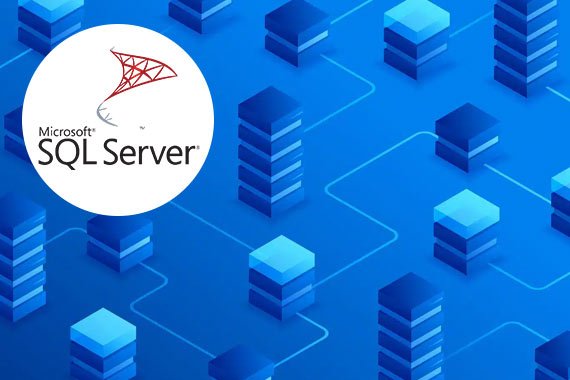Microsoft SQL Server
April 8, 2025 2025-08-20 16:17Microsoft SQL Server
Microsoft SQL Server
Home Courses Microsoft SQL Server




Microsoft SQL Server
Microsoft SQL Server is a core database solution for enterprises. This course covers T-SQL queries, database design, performance tuning, and BI integration, ensuring professionals can manage and analyze organizational data effectively.
Contact for More Information
+91 96660 64406
+91 96660 64406
Course Curriculum
Introduction
- Introduction to DBMS
- Introduction to RDBMS
- Introduction to OLTP \& OLAP
- Introduction to Database
- Introduction to Datawarehouse
- Architecture of Datawarehouse
- Entity \& Tables
- Facts and Dimensions
- Star and Snowflake Schema
Introducing SQL Server
- What is SQL Server
- Architecture of SQL Server
- SQL Server Editions
- Installing SQL Server
- Sql Server Instances
- Internals of Sql Server Database
- MDF \& LDF Files
Basic of Database Design
- Normalization
- Denormalization
- Introducing SQL Server Management Studio
- Creating a Database
- Data Types
- DDL Commands
- Designing Table Model
- Creating Tables
- Alteration of Table Design
- Add New Column, Drop Column
- Drop Table
Writing Queries
- INSERT queries
- UPDATE queries
- DELETE queries
- TRUNCATE
- The SELECT Clause
- The FROM Clause
- The WHERE Clause
- Mathematical Operator
- Conditional Operators
- AND , OR Operators
- Like Operators
- The ORDER BY Clause
- Using TOP N and TOP N PERCENT
- Aggregate Functions
- String Functions
- Date Functions
- Using GROUP BY and HAVING
Constraint in SQL SERVER
- What is Constraint
- Adding constraints to columns in Tables
- Primary Key Constraints
- Unique Constraints
- Check Constraints
- Default
- Alter Constraints
- Drop Constraints
Relational Database
- Why Relational Model
- Advantages of Relational Model
- Master Table \& Child Tables
- Introduction to Foreign Key
- Creating Relations between tables
Join In SQL SERVER
- Introduction to Joins
- Types of Joins
- Inner Join
- Left Outer Join
- Right Outer Join
- Full Outer Join
- Self-Join
- Writing Joins queries
- APPLYING CLAUSES USING JOINS
Advanced SQL QUERIES
- OFFSET \& FETCH
- SELECT INTO queries
- SUB-QUERIES
- UNION
- INTERSECT
- EXCEPT
- ROW\_NUMBER
- RANK
- CUBE \& ROLLUP
- What is T-SQL
T-SQL
- Syntax Conventions
- Executing SQL Statements
- Identifiers
- Operators
- Variables
- Using T-SQL to Build and Alter Objects
- If – else statements
- Case statements
- Looping statements
- Identity statements
- Types of functions
Stored Procedures, Function
- Introduction to Stored Procedures
- Writing Stored Procedures
- Alteration of Processing
- Using/Calling Procedures
- Using Input \& Output Parameters
- Advantage of Stored Procedures
- Introduction to Functions
- Writing Functions
- Scalar Functions
- Table Value Functions
- Comparison between Stored Procedures \& Functions
Types of Tables in SQL SERVER
- Temp Tables
- Local Temp Table
- Global Temp Table
- CTE
- Examples of CTE
- Table Variables
- Comparison between Temp Tables, CTE \& Table Variables
Views
- Introduction to Views
- Creating Views
- Alteration of Views
- Types of Views
- Simple View \& Complex View
Indexes
- Introduction to Indexes
- Types of Indexes
- Clustered Index \& Non Clustered Index
- Creating Indexes
- Best Practices of Indexes Creation
Advanced SQL-SERVER
- Error Handling
- Transactions
- Authentication Modes in SQL SERVER
- Creating Users
- Backup \& Restore
T-SQL
Introduction to T-SQL
- What is meant by T-SQL?
T-SQL Blocks
- Anonymous Blocks
- Named Blocks
Anonymous Blocks
- Variables
- Control Statements
- Cursors
Named Blocks
- Procedures
- Functions
- Triggers
Variables
- What are Variables
- Types of Variables
- Local Variables
- Global Variables
Control Statements
- What are Control Statements
- Types of Control Statements
- If Else
- If Else If
- Nested If
- Case When Then
Cursors
- What is Cursor
- Purpose of Cursors
- Types of Cursors
- Cursors without Variables
- Cursors with Variables
Stored Procedures
- What is a Procedure
- Need of Procedures
- Types of Procedures
- With Parameters
- Input Parameters
- Output Parameters
- Without Parameters
- Altering the Procedures
- Hiding the script of the Procedures
- Drop the Procedure
- With Parameters
Stored Functions
- What are functions
- Need of Functions
- Types of Functions
- Scalar OR Single Value
- Table Value or Multi-row
- Altering the Function
- Drop the Function
Triggers
- What is Trigger
- Purpose of Trigger
- Types of Triggers
- DDL Triggers
- DML Triggers
- 2.1 DML After Triggers
- After Update
- After Delete
- After insert
- 2.2 DML Instead of Triggers
- Instead of Update
- Instead of Delete
- Instead of insert
ADD ON
- Real-Time Project
- Resume Preparation, SQL Server Developer Roles & Responsibilities
- Interview Questions Discussions
- Mock Interviews

